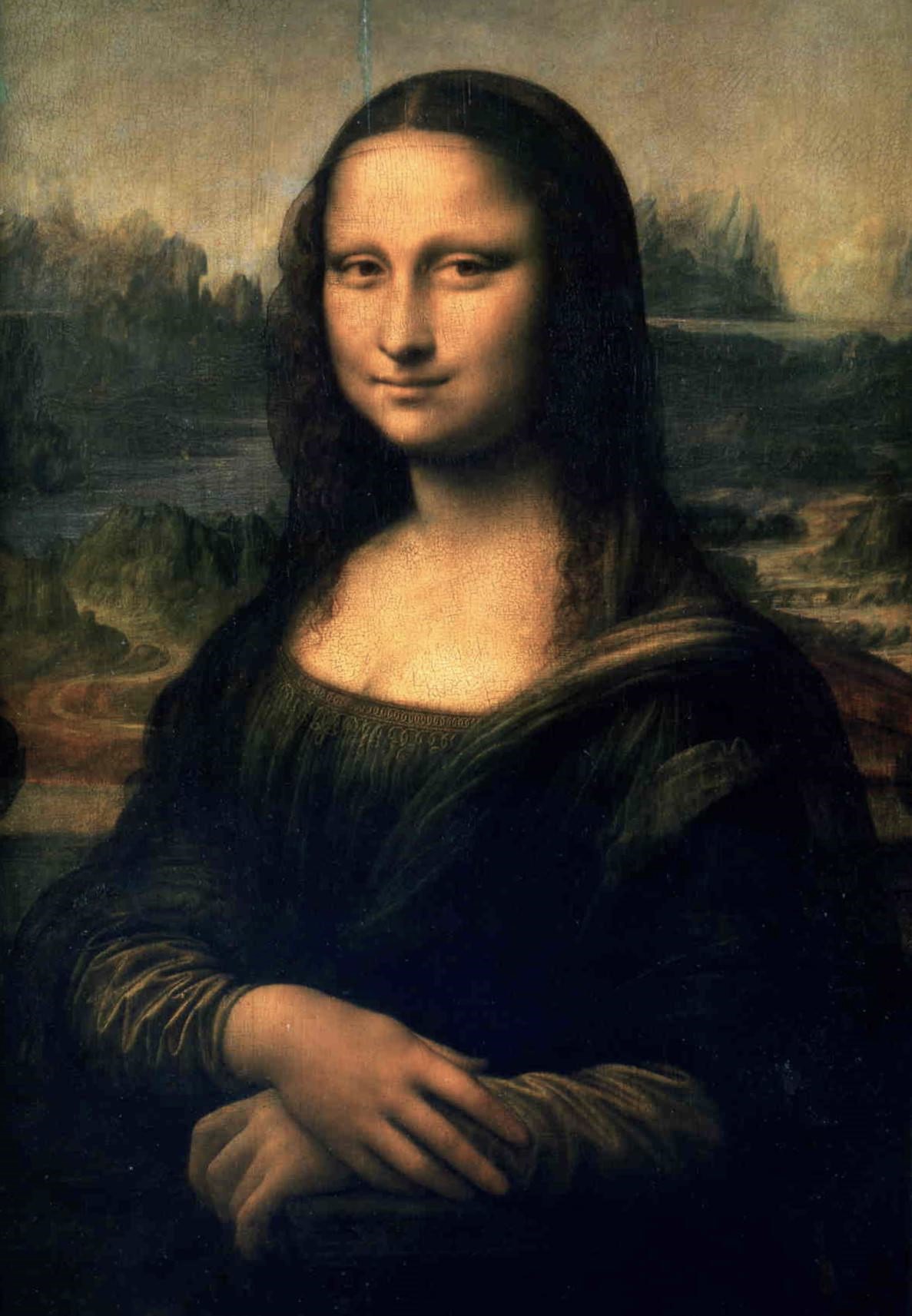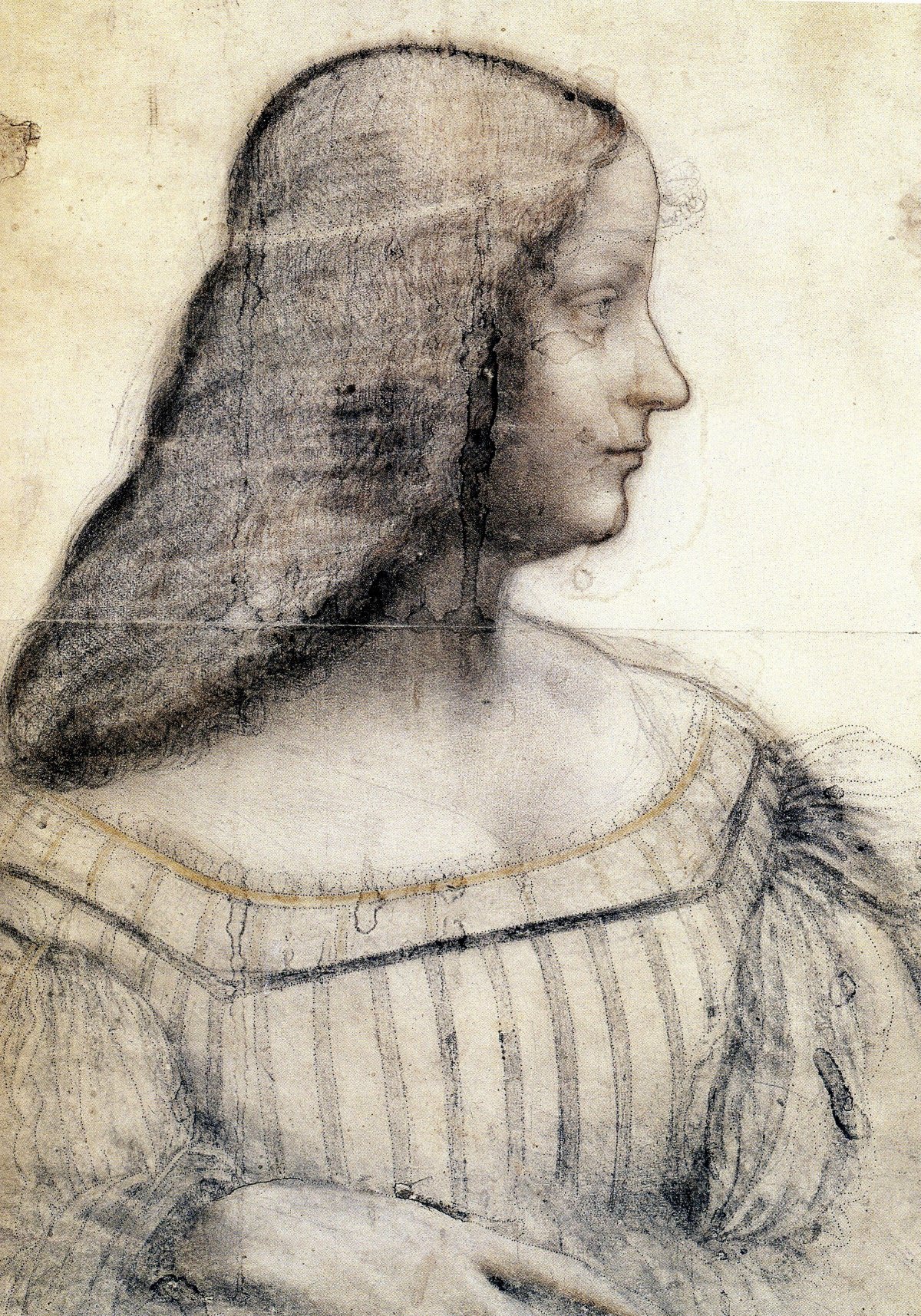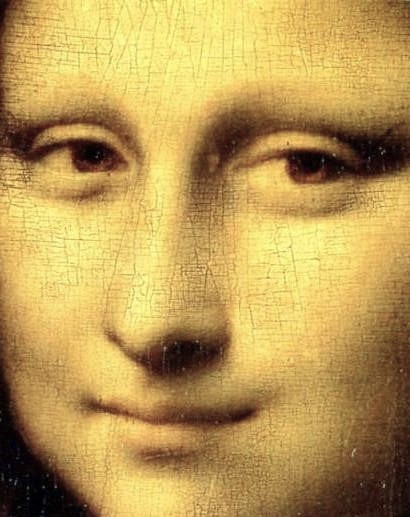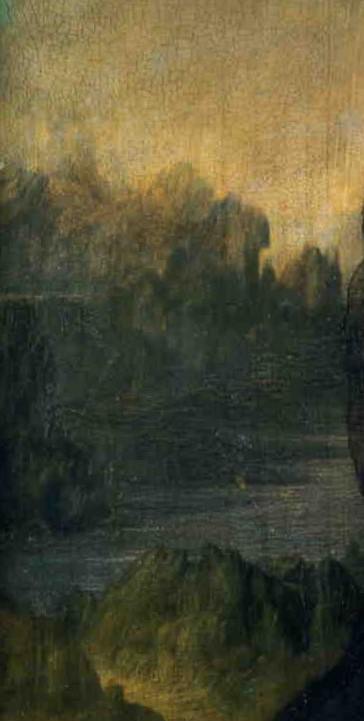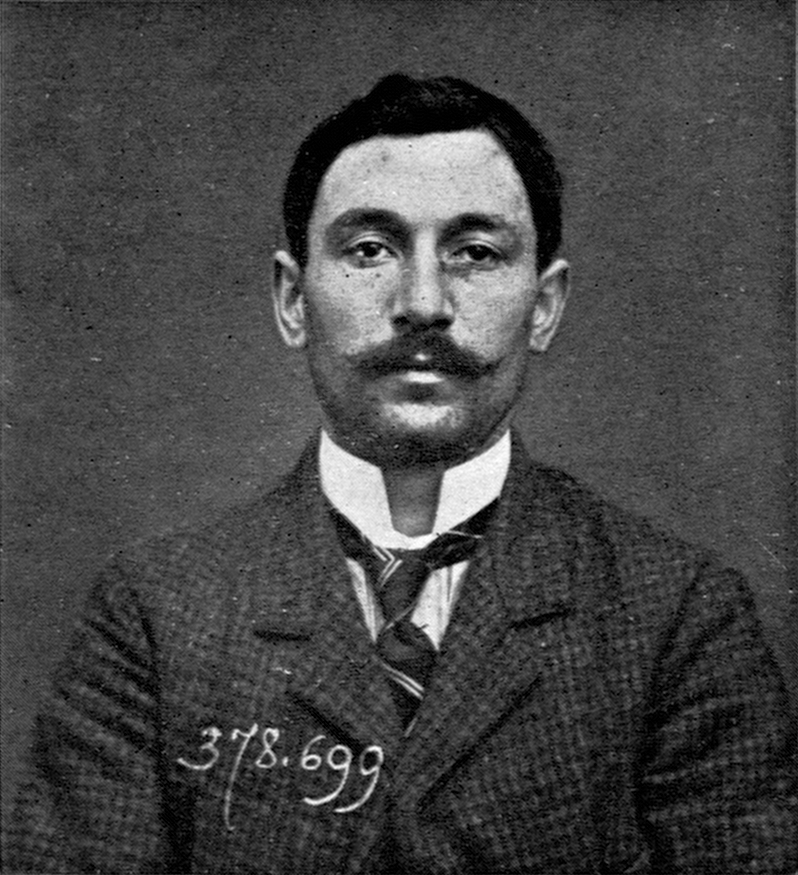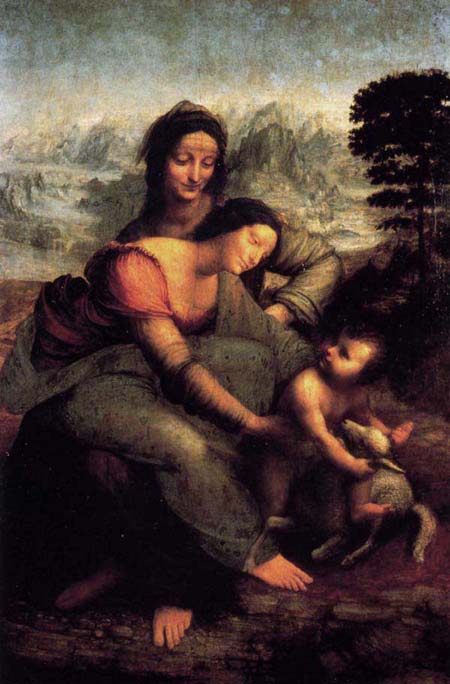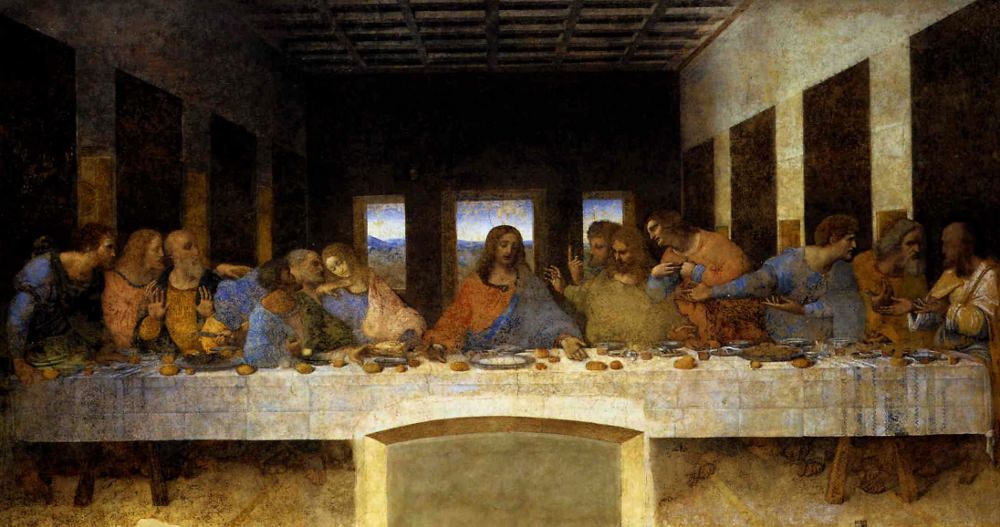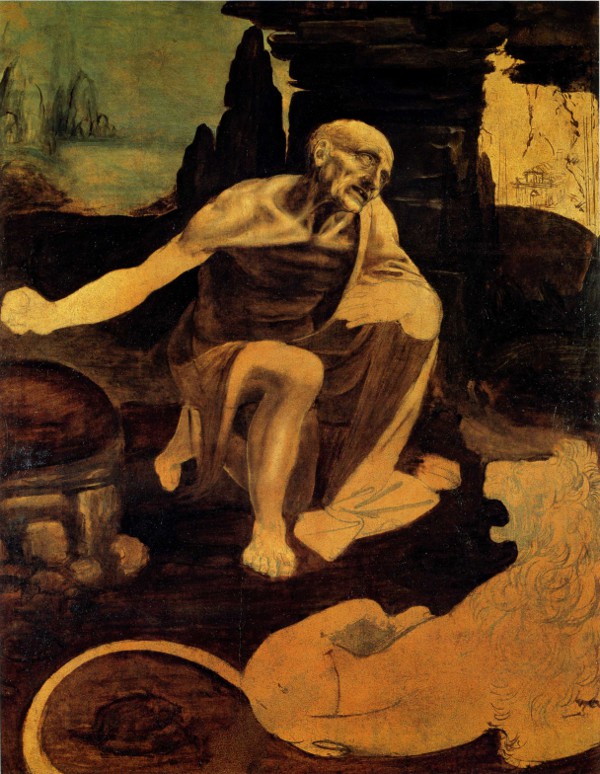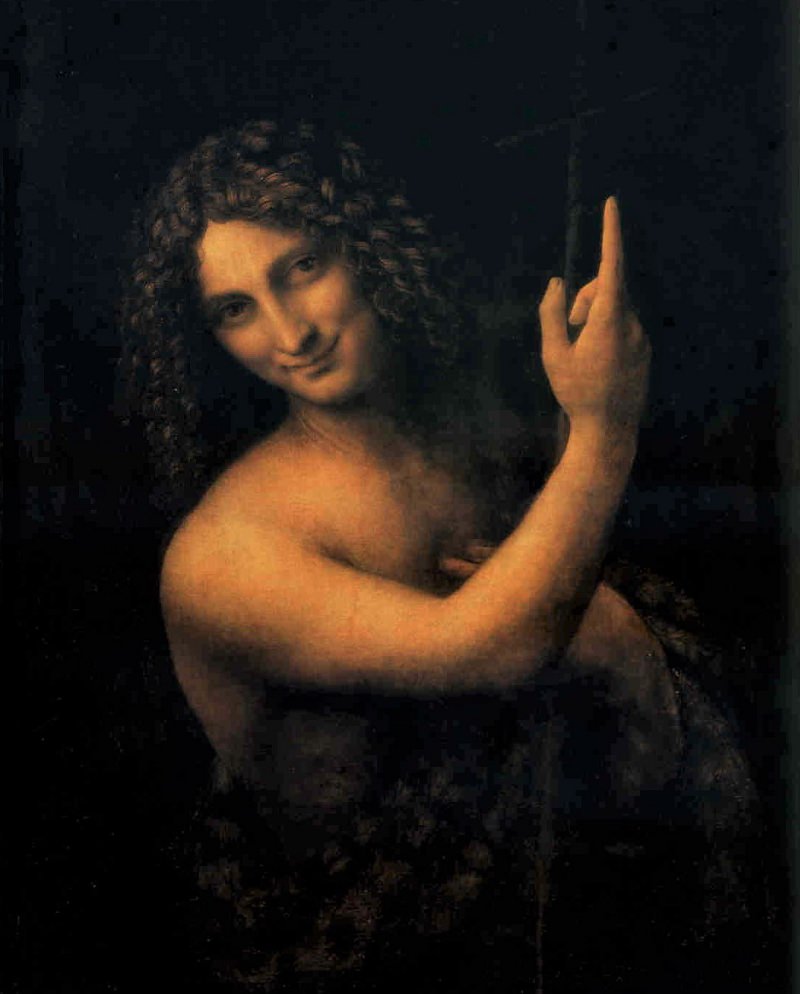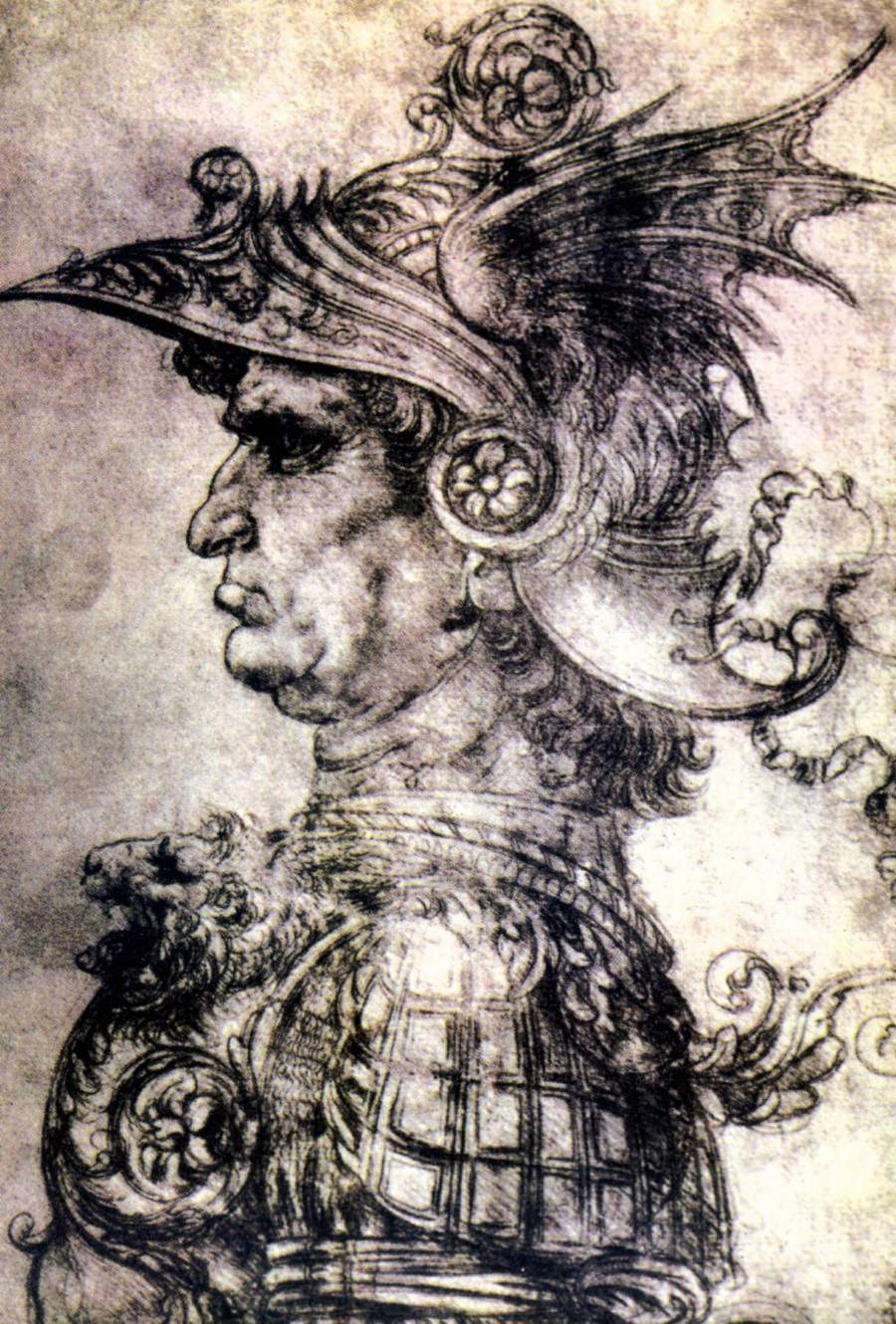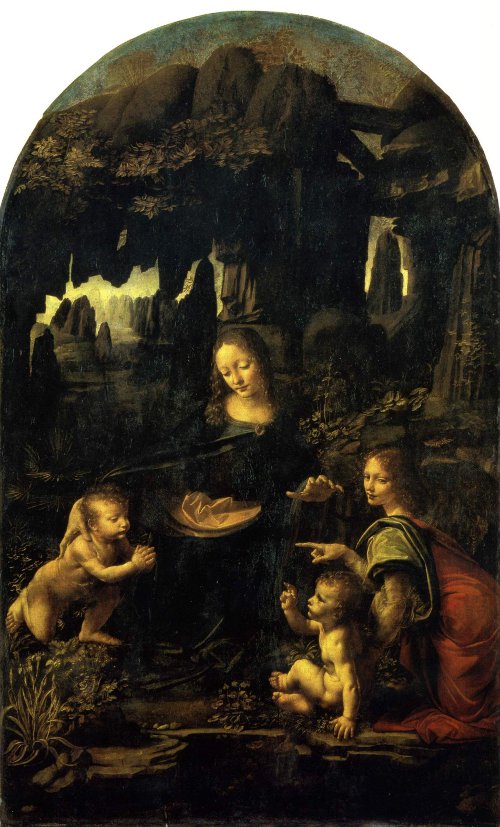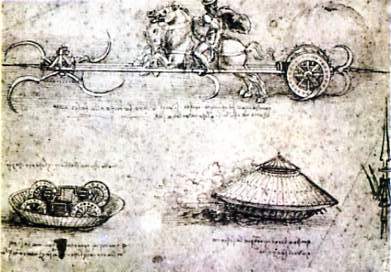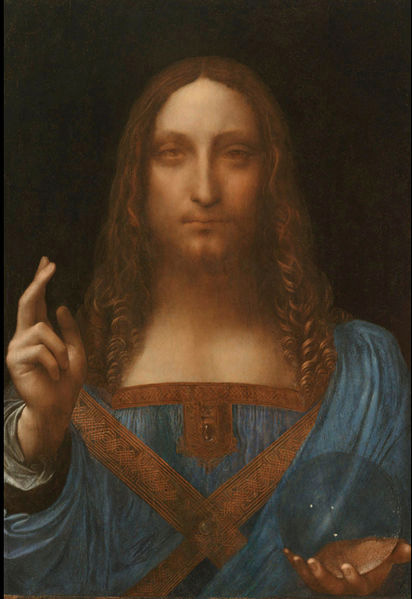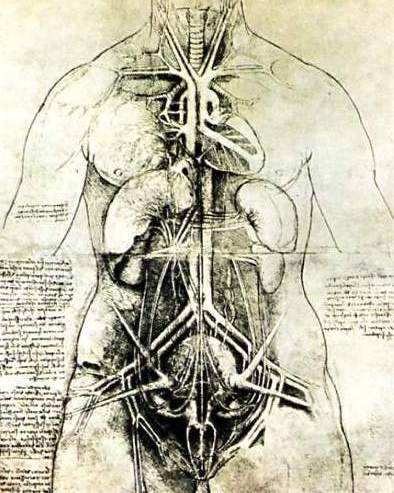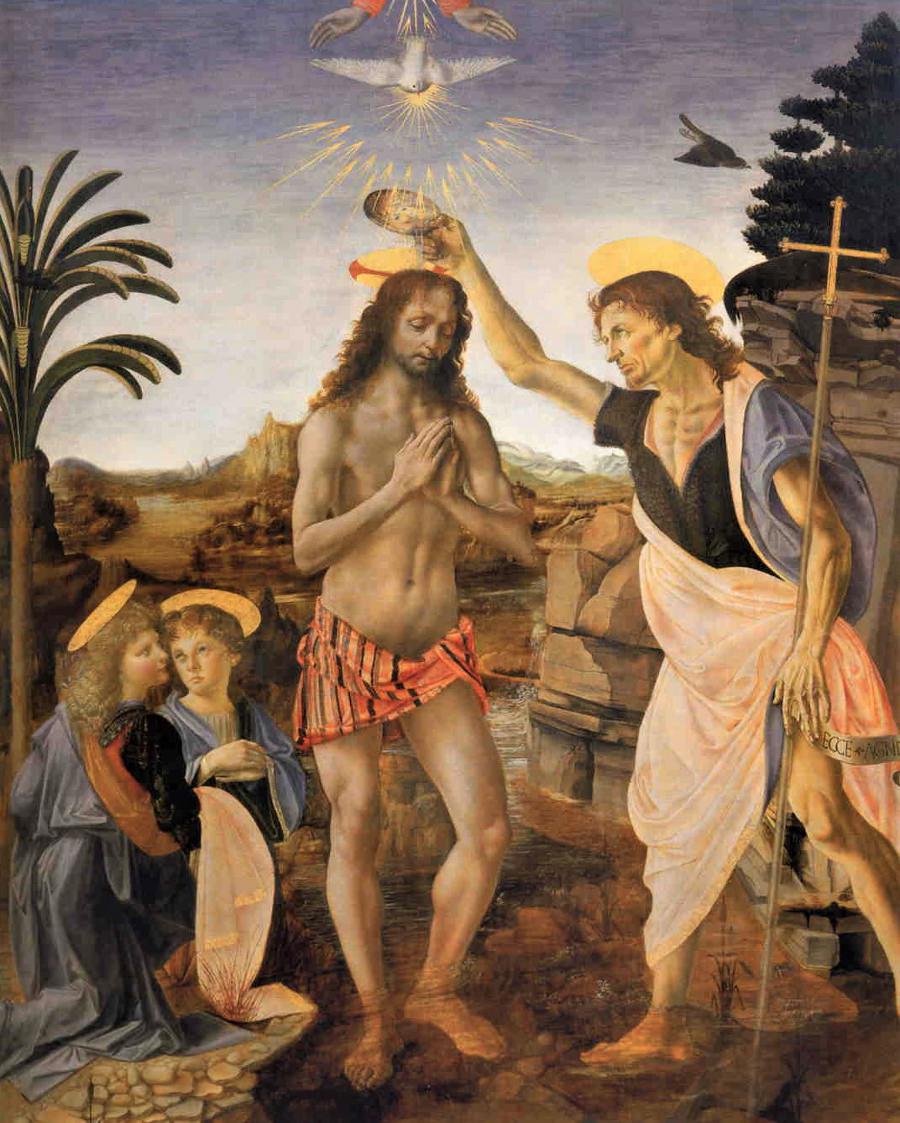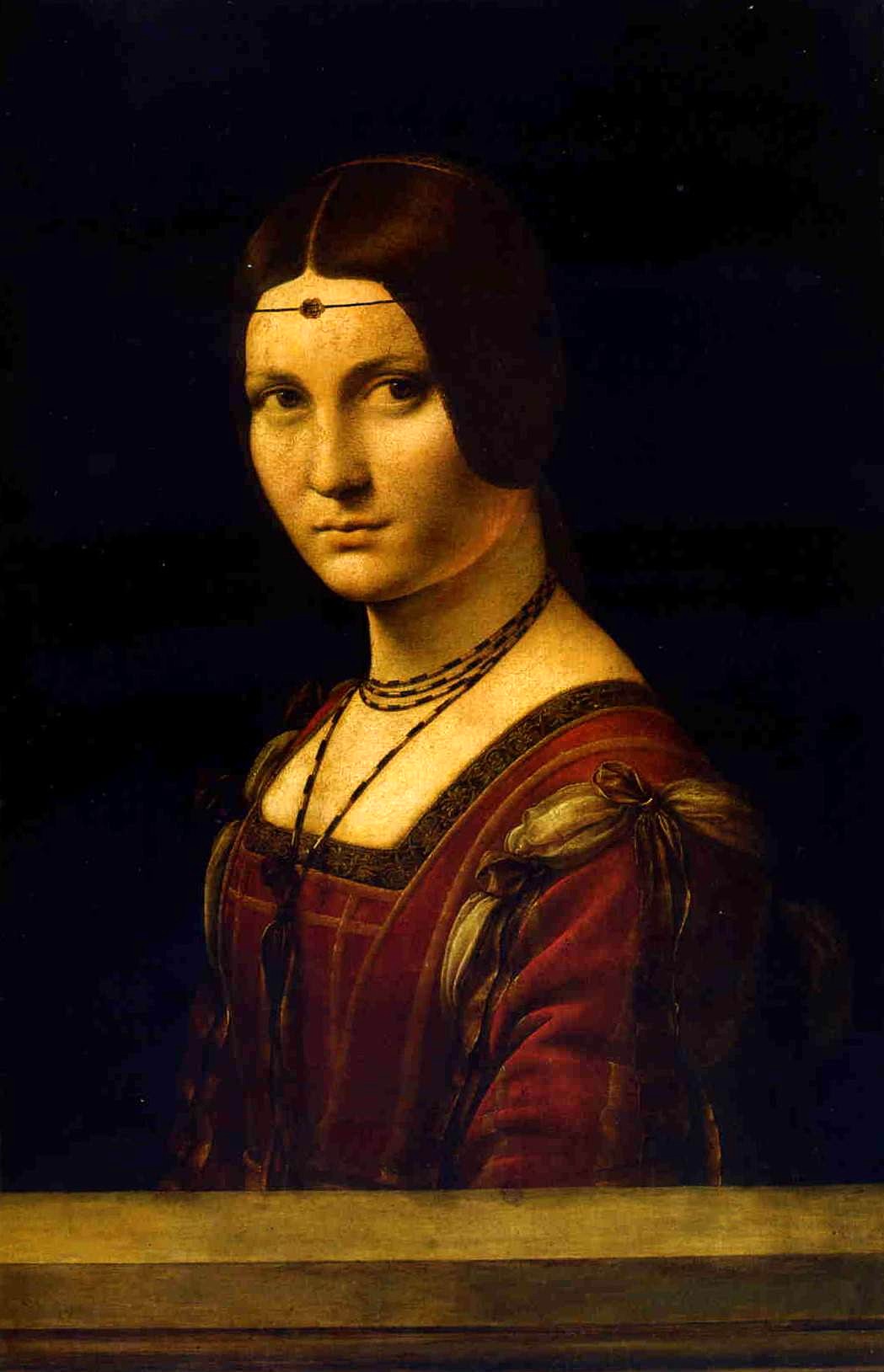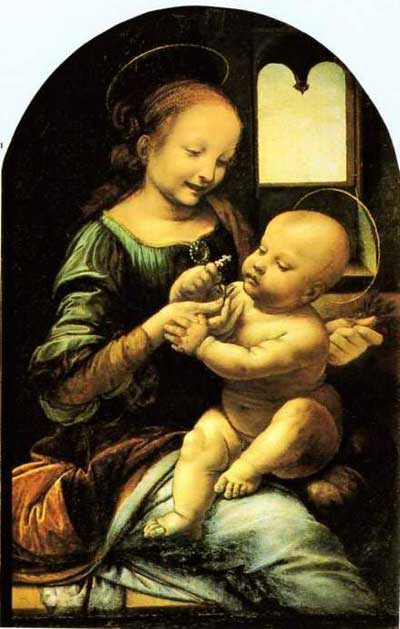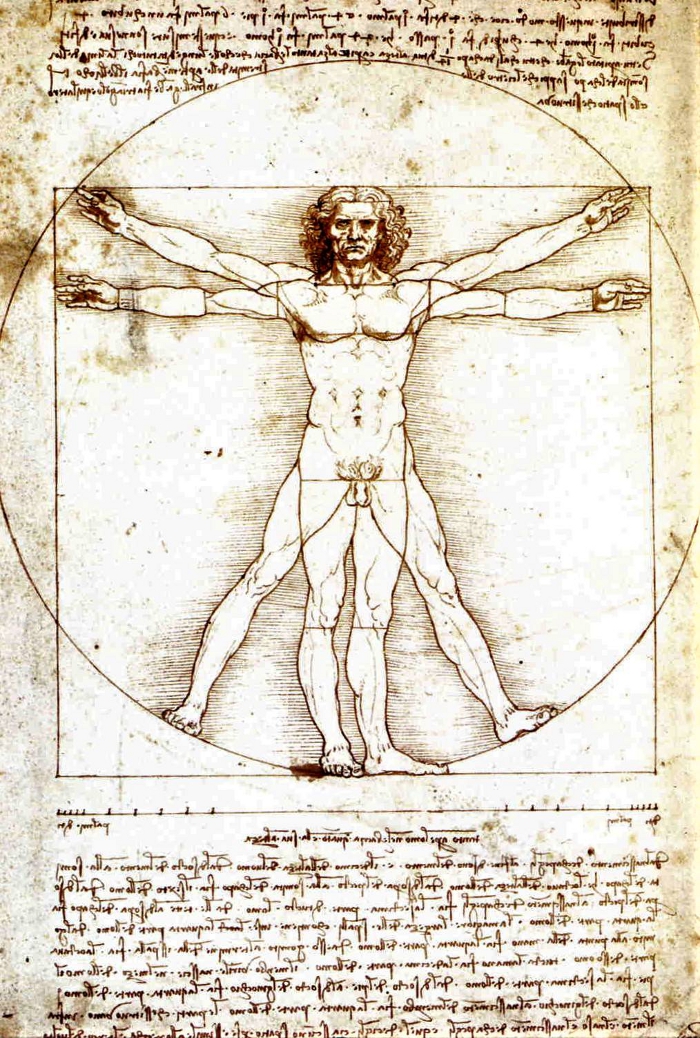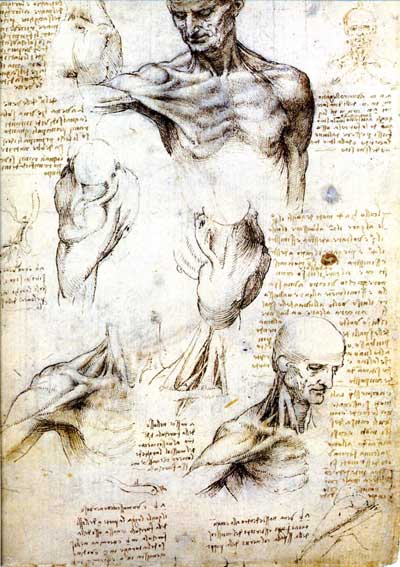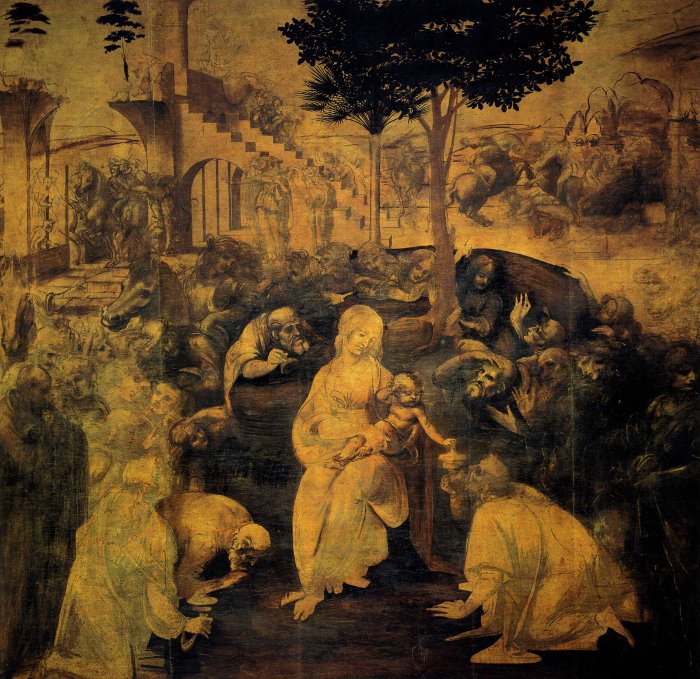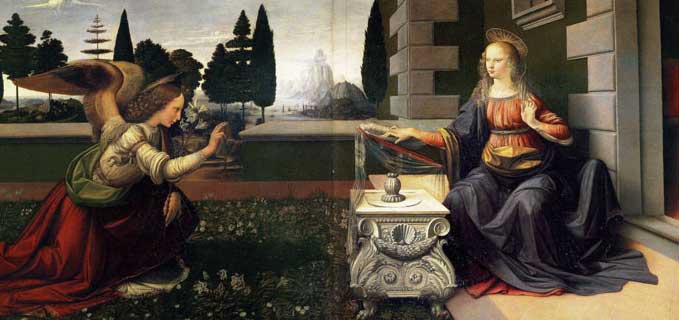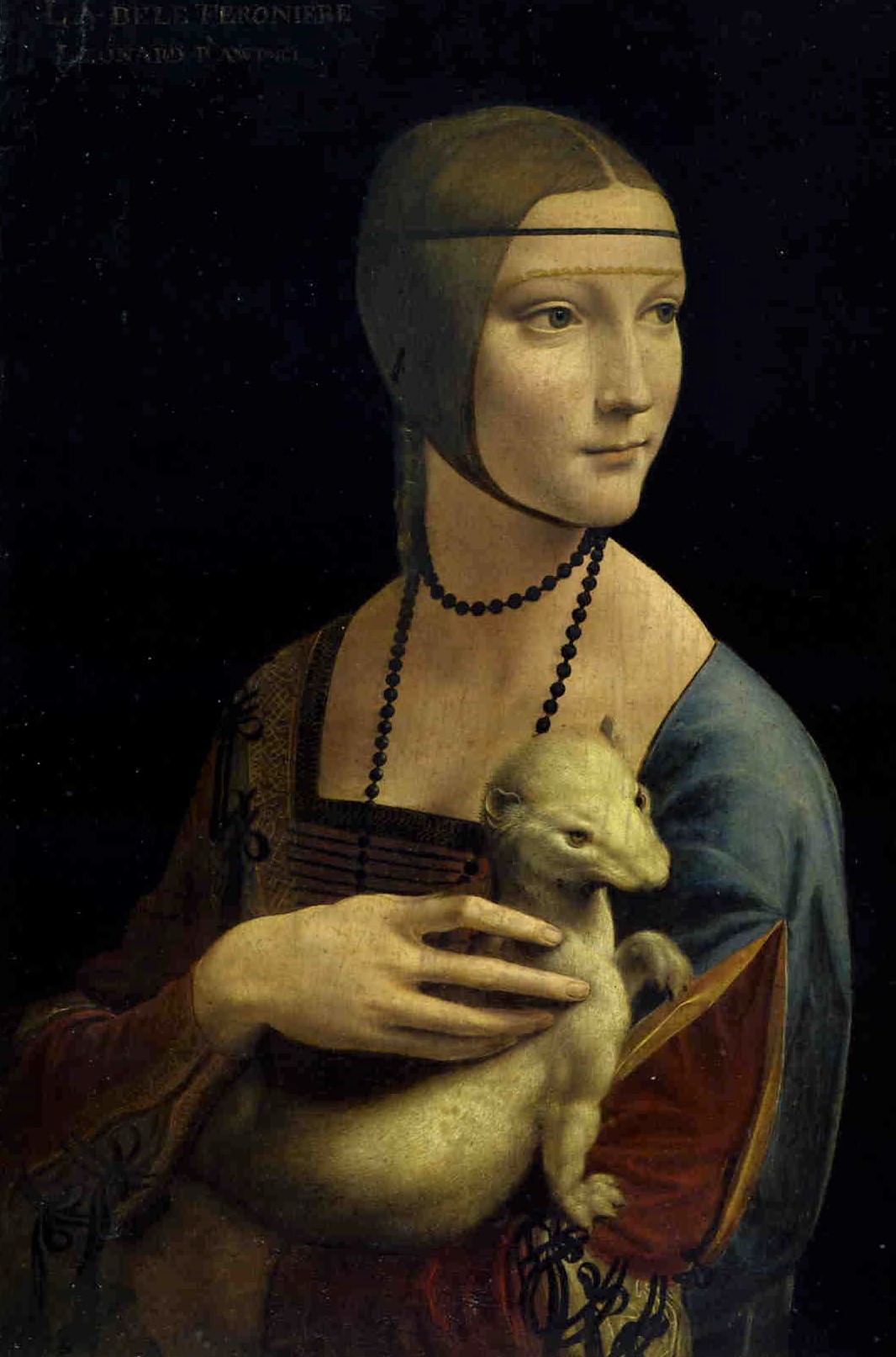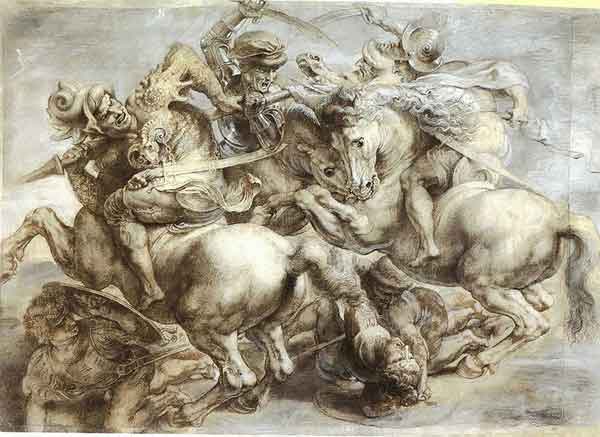The Mona Lisa.
Leonardo da Vinci's enigmatic masterpiece.
Leonardo da Vinci’s Mona Lisa is undoubtedly the world’s most recognised painting, it is also the most famous portrait in the world. Being the most famous does not imply that it is the best but certainly it is a masterpiece of outstanding quality. So much has been written about Leonardo’s stunning portrait that the story of the painting has become mired in a mix of fact, speculation, and pure fantasy, making it difficult for many to evaluate the work objectively.
We have become familiar with the image on postcards, advertisements, and copies in various forms, some are faithful reproductions, others are not. I have even seen a dog's head superimposed on the painting and the image is so well known that it is instantly recognisable, even after such distortions.
The Mona Lisa is placed half-length seated on a balcony with a muted blue-green landscape vista behind her. This was unusual, portraits of the time rarely if ever included a background. Even Leonardo’s previous exercises such as The Lady with an Ermine was placed in front of a none descript dark background. Lisa’s face is built from a series of tonal layers of paint expertly crafted by Leonardo. The artist has created an image of ambiguous beauty. The features highlight the subtle nature of Leonardo's sfumato effects.
It does not explain the fascination with the Mona Lisa's smile, or the speculation and theories surrounding the painting. According to Vasari, Leonardo employed singers and bell ringers and other entertainers to keep Lisa amused while he was painting her, hence the smile. Others have claimed that the smile evolved during the years that Leonardo reworked the painting. We will never really know the truth about any of these claims and in a way, it does not matter, we need only to study the details of the painting to be assured of Leonardo's genius.
Leonardo has achieved his masterpiece by leaving something to the
imagination. The outline is not firmly drawn and is softened almost merging
with the background allowing the colours to mellow. This harmonious invention of
Leonardo's has been given the Italian name 'sfumato'.
Who was the Mona Lisa?
The identity of the sitter has been questioned although it is accepted that Lisa Gherardini, the wife of the Florentine silk merchant Francesco del Giocondo is the subject of the painting it is by no means certain that she was.
It was the historian Giorgio Vasari who identified Francesco’s wife as the sitter. However, Vasari was describing a painting that he had never seen, even so his description is the only written account that exists.
If Francesco did commission the work, he never received it, Leonardo kept the painting making changes intermittently over several years. Other notable names include Isabella d’ Este the wife of Francesco II Gonzaga, Marquess of Mantua. Leonardo had completed a pastel drawing of Isabelle although she is drawn in profile her hands are in a similar position to those of Mona Lisa as is her torso, although reversed it does resemble that of Lisa.
Other possibilities are Costanza d'Avalos, Duchess of Francavilla, or the wife of Louis XII who was Leonardo’s patron at the time.
Leonardo knew more about the workings of nature than anyone who had lived before him and that the eye does not see everything with crystal clarity at every glance. The Mona Lisa can look different each time we look at her. Our eyes fill in the vagueness of her face and the image is harmonised by the skill of an artist and scientist who has fully utilised his knowledge to produce a masterpiece of Western Art.
The theft of the Mona Lisa, the rise to fame of a masterpiece.
The Mona Lisa was stolen from the Louvre Museum in 1911 by an Italian immigrant and employee of the Louvre, Vincenzo Peruggia. At around 7am on Monday 21st August 1911, Peruggia entered the Louvre along with several other workers at the museum, wearing a white smock as was the custom of the museum's employees at the time he blended seamlessly into the background. The Mona Lisa hung in the Salon Carré within the Louvre, when the room had emptied Peruggia removed the painting from the wall, moving to a nearby stairwell he took it from its protective box intending to hide the painting beneath his smock.
However, Leonardo's masterpiece was painted on wooden panels and could not be rolled up like a work on canvas, unable to conceal his prize within his clothing, Peruggia removed his smock and wrapped it around the painting. Perugia then slipped out of the Louvre through a side entrance into the street.
The theft was only noticed the following day some 26 hours after the theft. The museum officials interviewed the permanent staff and in turn the casual workers such as bricklayers, decorators, and anyone on a short-term contract. Peruggia was twice interviewed but was not considered a prime suspect, he kept the Mona Lisa in a false compartment in a trunk in his apartment for more than two years.
Leonardo da Vinci’s famous painting did not always enjoy worldwide fame. At the time of the theft the Mona Lisa was known only as one of many renaissance artworks, it was not even the most visited artwork in the Louvre. News of the theft broke with an announcement by the Louvre on Tuesday 22nd August, the day after the heist. The news caused a media storm with newspaper headlines covering the story, illustrations of the painting appeared in the media and wanted posters of the artwork appeared on Parisian walls, crowds gathered outside police headquarters desperate for news.
Such was the interest in the theft that queues formed to view the empty space where the Mona Lisa once hung. Within a few days the Mona Lisa had become the most famous painting in the world a status that it still enjoys today.
The police, along with everyone else had no real idea who the culprit was, they desperately arrested and questioned the avant-garde poet Guillaume Apollinaire for a week before he was released. Another suspect was the 29-year-old Pablo Picasso who was also questioned but as the police had no evidence against him no action was taken.
More than two years after the theft Vincenzo returned to Italy with his prize, which he kept in his Florence apartment. He then offered the painting to Alfredo Geri the owner of a Florentine art gallery. Peruggia expected a substantial reward for his stolen goods. However, Geri contacted the Uffizi Gallery, the Mona Lisa was authenticated by the museum director Giovanni Poggi, the police were informed and Peruggia was arrested.
The Mona Lisa was briefly exhibited in Italy before returning to the Louvre in January 2014. Vincenzo Peruggia was put on trial, convicted, and sentenced to one year and fifteen days but because he was seen as an Italian hero who had returned the Mona Lisa to its homeland, he was released after only seven months. In a world without computers the internet and mobile phones it was due to the world-wide distribution of newspapers that the Mona Lisa’s fame was assured.
The Mona Lisa, Copies and Claims!
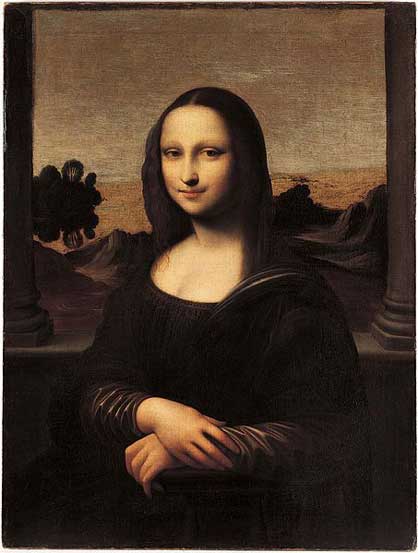 Isleworth Mona Lisa
Isleworth Mona LisaThis is the latest offering claiming to be a Leonardo! (There have been many, see the Salvator Mundi.)
The painting above, the so-called Isleworth Mona Lisa, is claimed to be an earlier version painted by Leonardo. The fact that it displays none of the subtlety of Leonardo's style and is painted on canvass (da Vinci painted on wooden panels) has not stopped the vested interest bandwagon from claiming that it was, at least in part, painted by da Vinci.
A blog by Jonathan Jones of the Guardian cleverly expands on the contradictions that the media place on the great artist's work.
- Home
- Leonardo da Vinci
- Mona Lisa
